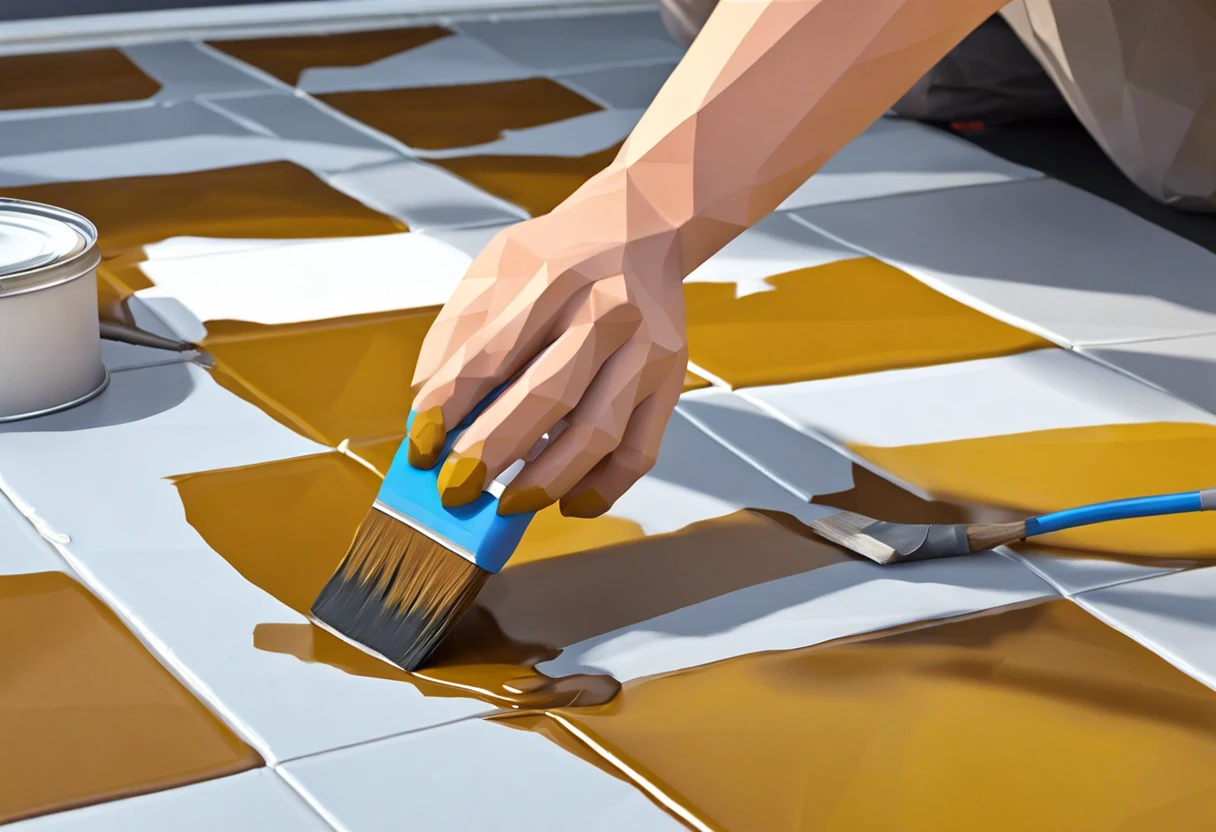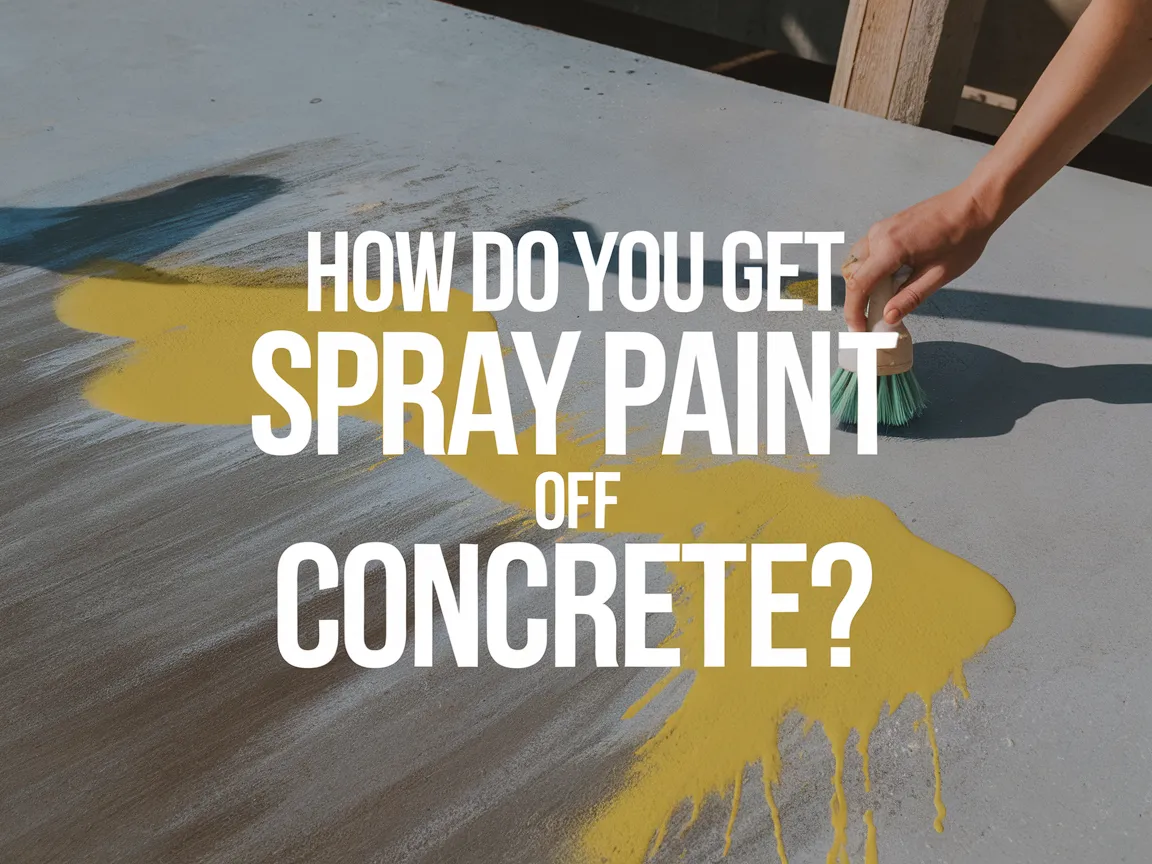Can Vinyl Tile Be Painted?
Vinyl tile is a flexible floor covering. It feels like a sticker but covers the whole floor, making it pretty and easy to clean!
So, can vinyl tile be painted? It’s super important to get this right; I learned the hard way when a paint job turned into a sticky mess.
In this guide, we’ll explore how to paint vinyl tile, what supplies you need, tips for success, color ideas, and common issues to avoid. Plus, we’ll answer questions like can you paint over linoleum flooring and how to clean paint off the floor.
Contents
- 1 Can Vinyl Tile Be Painted?
- 2 What is Vinyl Tile?
- 3 What You Need to Know Before Starting Your Vinyl Tile Painting Project
- 4 Steps to Successfully Paint Vinyl Tile
- 5 Types Of Vinyl Tiles and Their Compatibility With Paint
- 6 Factors Affecting the Outcome Of Painted Vinyl Tiles
- 7 Finishing Touches for Your Painted Vinyl Tiles
- 8 Creative DIY Project Ideas for Painted Vinyl Tiles
- 9 Maintenance for Painted Vinyl Tiles
- 10 Popular Brands for Vinyl Tile Paint
- 11 Cost Considerations for Painting Vinyl Tiles
- 12 Frequently Asked Questions About Painting Vinyl Tile
- 13 Conclusion
- 14 Additional Resources
Can Vinyl Tile Be Painted?
Yes, you can paint vinyl tile. Use a high-quality primer and paint made for vinyl surfaces. This helps the paint stick and look good. If you need to adjust your paint’s consistency, you might want to paint tile surfaces carefully. Just make sure to clean the tile properly before you start!
What is Vinyl Tile?
Vinyl tile is a popular flooring option made from polyvinyl chloride (PVC) resin. Often available in 12-inch by 12-inch (30.48 Cm by 30.48 Cm) squares, it combines durability with a wide range of designs, making it a top choice for both residential and commercial spaces.
Now, to the question: can vinyl tile be painted? Many people wonder about this after getting tired of their tile color or seeking a fresh look without a major overhaul.
I had a friend use vinyl tile for their basement renovation. They were thrilled with the easy installation, but they also asked, can you paint a vinyl floor? This shows that vinyl’s versatility allows for creativity, but you need to be cautious and prepare properly if you want to paint it, ensuring a long-lasting finish. When considering painting vinyl flooring, it’s crucial to understand the specific techniques that can help you achieve optimal painting conditions.
What You Need to Know Before Starting Your Vinyl Tile Painting Project
What do you need to get started?
- High-Quality Vinyl Paint: Use a paint like Rust-Oleum Specialty Vinyl Spray, which adheres well. It’s essential for a lasting finish on vinyl tile.
- Mop and Vinyl Floor Cleaner: A cleaner such as Zep Neutral pH Floor Cleaner ensures your tiles are dirt-free. This step is crucial for paint adhesion.
- Painter’s Tape: Use 3M Blue Painter’s Tape to protect edges around your tile. It helps create clean lines and keeps your work looking professional.
- Roller and Tray: You’ll need a ¼-inch (6 Mm) nap roller and a tray to apply paint evenly. They distribute paint smoothly across the tile surface.
- Soft Cloths: Microfiber cloths are essential for cleaning. You’ll want these to wipe down surfaces before painting.
That covers essential tips for your vinyl tile painting project. Let’s now take a look at the steps for successful painting.
Also See: Can You Paint Crayola Model Magic? Yes, You Can!

Steps to Successfully Paint Vinyl Tile
Now, we’ll cover the essential steps to effectively paint vinyl tile. You’ll get the best results when you follow these steps!
-
Prepare the Surface
Clean your vinyl tiles with a strong degreaser and water. Remove all dirt, grease, and grime for a smooth painting experience.
Don’t forget to dry completely! Any leftover moisture can lead to peeling paint later.
-
Patch Any Damages
Inspect for scratches, dents, or cracks and fill them with a suitable floor patching compound. Ensure it’s rated for vinyl and follow the manufacturer’s guidelines — usually a drying time of about 1-2 hours works well.
For a perfect finish, sand the patched areas smoothly before painting. You want a flat and seamless surface, right?
-
Choose the Right Paint
Choose high-quality epoxy or acrylic paint designed specifically for vinyl. Look for durability against foot traffic and make sure it lists adhesion to vinyl in its specifications.
Check the manufacturer’s instructions for application and curing over vinyl. Some paints need a specific temperature range to adhere and cure effectively.
-
Start Painting
Apply a thin layer of paint using a roller for large surfaces and a brush for edges. Thin, even coats prevent drips — 2-3 coats usually provide the best finish.
Let each coat dry for about 4-6 hours, depending on the paint. Ensure you’re in a well-ventilated area to speed up the process!
-
Seal the Painted Tiles
Apply a clear polyurethane seal to protect the paint and enhance durability. Ideally, choose a water-based sealant, as it dries quicker and has a lower odor.
Let the sealer cure fully after the last coat — about 24-48 hours. Place a towel on the floor and walk on it cautiously during this period for safety.
You should now have a good understanding of effectively painting vinyl tile. In the next part, we’ll discuss vinyl tile types and paint compatibility.
Types Of Vinyl Tiles and Their Compatibility With Paint
Let’s move on to types: sheet vinyl, luxury vinyl plank, vinyl composite tile, and linoleum.
-
Sheet Vinyl
Sheet vinyl comes in large, continuous sheets. It’s typically 1.5 to 3 mm thick and can be painted, but preparation is key.
-
Luxury Vinyl Plank (LVP)
Luxury vinyl plank mimics wood and usually ranges from 4 to 8 mm thick. You can paint LVP, but choose the right paint for durability.
-
Vinyl Composite Tile (VCT)
VCT is thicker than sheet vinyl, generally at least 2 mm. It can be painted, but cleaning and priming are essential before applying paint.
-
Linoleum
Linoleum is made from natural materials and is about 2 to 4 mm thick. You can paint over linoleum, especially with proper preparation.
This reminds me of a valuable lesson I learned while working with LVP flooring: choosing the right paint significantly affects the floor’s durability and appearance.
We have now covered the various types of vinyl tiles and their compatibility with paint. Next, we will discuss the factors influencing the results of painted vinyl tiles.
Factors Affecting the Outcome Of Painted Vinyl Tiles
What factors influence painting vinyl surfaces? Here are a few key points.
-
Surface Condition: Cleanliness and smoothness of the vinyl greatly affect paint adhesion.
-
Type of Paint: Using the right paint ensures durability; not all paints adhere to vinyl.
-
Environmental Conditions: Temperature and humidity affect drying time and finish quality.
-
Preparation Method: Properly priming and preparing the vinyl ensures a lasting paint job.
That covers elements influencing painted vinyl tiles’ results. Let’s now take a look at the final enhancements for your tiles.

Finishing Touches for Your Painted Vinyl Tiles
After painting vinyl tiles, allow them to cure for 72 hours (3 Days) before allowing heavy foot traffic. Clean them regularly with a pH-neutral cleaner to maintain the finish and prevent wear.
Inspect the paint for peeling or wear every 1-3 months. Use touch-up paint like BEHR Premium for quick repairs. Ensure no moisture accumulates under the tiles to prevent damage.
I recommend applying a topcoat after one month to enhance durability. Use a polyurethane-based sealant, such as Rust-Oleum’s Ultimate Polyurethane, for added protection against scratches.
Creative DIY Project Ideas for Painted Vinyl Tiles
Feeling adventurous? Try creating a vibrant checkerboard pattern by painting different shades on your vinyl tiles or transform them into unique art pieces with bold stencils!
To get started, you’ll need vinyl floor paint, brushes, and some stencils. Plan to spend about $50 to $100, and you can wrap up the project in a single weekend—around 5 to 10 hours max, depending on your design.
Looking for alternatives? You could re-grout your tiles with colored grout for a fresh look. Or, if you love patterns, consider investing in removable peel-and-stick vinyl decals to jazz up your floor without the commitment!
Maintenance for Painted Vinyl Tiles
Once you’ve painted your vinyl tiles, you’ll want to keep them looking sharp. Here’s how to maintain them to prolong their life.
- Regular Dusting: Use a microfiber broom or mop to remove dust and dirt. Aim for once a week.
- Gentle Cleaning: Wipe the tiles with a pH-neutral floor cleaner. Avoid harsh chemicals that could damage the paint.
- Avoid Heavy Scrubbing: Stick to soft cloths or mops. Scrubbers can wear down the paint over time.
Popular Brands for Vinyl Tile Paint
If you’re looking for reliable paint brands, check these out:
| Brand | Type | Approximate Coverage Area (sq ft / m²) | Average Price (USD) |
|---|---|---|---|
| Rust-Oleum Specialty | Vinyl Spray Paint | 10 sq ft (0.93 m²) | $13 – $20 |
| KILZ Floor Paint | Water-Based Paint | 100 sq ft (9.29 m²) | $25 – $35 |
| Behr Premium Plus | Acrylic Paint | 200 sq ft (18.58 m²) | $30 – $45 |
| Benjamin Moore Regal | High-Performance Paint | 350 sq ft (32.52 m²) | $50 – $70 |
Cost Considerations for Painting Vinyl Tiles
Thinking about a budget? Here’s a breakdown of potential costs when painting vinyl tiles.
| Item | Estimated Cost (USD) | Notes |
|---|---|---|
| High-Quality Vinyl Paint | $20 – $40 | Choose epoxy or acrylic. |
| Primer | $10 – $25 | A must for adhesion. |
| Sealer | $15 – $30 | Protects the paint. |
| Cleaning Supplies | $10 – $15 | Essential for prep. |
Overall, you’re looking at around $65 to $110 for the entire project. Make sure to factor in any supplies you might already have!
Frequently Asked Questions About Painting Vinyl Tile
Can You Use Regular Paint on Vinyl Tiles?
Yes, you can use regular paint on vinyl tiles, but it’s not the best choice. Regular paint may not adhere well and could chip or peel over time. Specialized vinyl floor paint is designed to bond effectively, ensuring durability and longevity.
How Long Does Painted Vinyl Tile Last?
Painted vinyl tile typically lasts around 3 to 5 years. This lifespan depends on the quality of the paint and how much traffic the area gets. With proper care, including sealants, you can extend its life even further. If you’re considering painting different surfaces, you might want to explore painting brass surfaces effectively.
Is It Necessary to Prime Vinyl Tile Before Painting?
Yes, it’s necessary to prime vinyl tile before painting to enhance adhesion. Primers create a bonding layer, preventing paint from flaking off. This step is crucial for achieving a smooth and long-lasting finish. If you want to protect your newly painted surface, you might want to apply a clear protective coat.
What Type Of Sealer Should Be Used After Painting Vinyl Tiles?
You should use a water-based polyurethane sealer after painting vinyl tiles. This type of sealer not only protects the paint but also adds a durable top layer, which is resistant to moisture and wear. Look for at least 1.5 mm film thickness for best results. When selecting the right finish for your baseboards, you might want to explore professional painting recommendations.
Can I Paint Over Damaged Vinyl Tiles?
No, you shouldn’t paint over damaged vinyl tiles. If tiles are cracked or curled, the fix needs attention first. Repairing them ensures the paint job looks great and lasts longer, creating a dependable surface. When preparing your tiles, you’ll want to know the proper techniques for maintaining your painting tools.
How Do You Clean Vinyl Tiles Before Painting?
To clean vinyl tiles before painting, use warm soapy water or a vinegar solution. A clean surface helps the paint adhere better. Make sure to rinse and let the tiles dry completely before coating. If you’re considering painting other surfaces like bathroom fixtures, you might want to explore painting techniques for bathroom sinks.
Can You Paint Over Linoleum Flooring?
Yes, you can paint over linoleum flooring, but it requires proper preparation. Like vinyl tiles, linoleum should be cleaned and primed before application. This prevents peeling and promotes sticking. When you’re ready to tackle this painting material project, cleaning your paint sprayer thoroughly will ensure a smooth and professional finish.
Conclusion
We’ve reached the end, and I appreciate you sticking around. We covered what vinyl tile is, what you need to know before starting, necessary steps for a successful paint job, a recommended color palette, types of vinyl tiles and their compatibility with paint, factors affecting the outcome, common issues and how to avoid them, finishing touches, and some creative DIY project ideas.
So, can vinyl tile be painted? Yes, with the right prep and paint, you can transform your floors. Just remember to use compatible materials and follow the recommended steps for the best results.
For more comprehensive guides and tutorials, visit Paint Answers.
Additional Resources
- Edwards, B. (2012). Drawing on the Right Side of the Brain. New York, NY: TarcherPerigee.
- How to Paint Old Vinyl Floors to Look Like New Tile – DIY …
- How to Paint Vinyl Floors | Cement Tile Look – Cherished Bliss
- How to Paint Vinyl Flooring for a Quick Room Makeover
Isabella is a Filipino-American art writer and critic specializing in contemporary painting, blending her Filipino heritage with global art trends. She holds a BFA from California State University, Long Beach, and a Minor in Art History from the University of the Philippines. Isa has experience as a Gallery Assistant, Art Appraisal Specialist, and Social Media Creative for Art & Design.
Material, Tile
Also See: What Paint to Use on Jeans? Tips for Unique Designs




